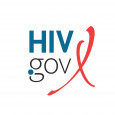NIH-funded Study Finds Several Potential Risk Factors for High Blood Pressure Disorders of Pregnancy in People with HIV
Cross-posted from: National Institute on Child Health and Human Development Newsroom
The risk for hypertensive disorders of pregnancy was higher for pregnant people with HIV if they had low CD4+ immune cell counts in the first or second trimester or if they began taking antiretroviral drug regimens after 20 weeks of pregnancy, rather than at conception, according to a study funded by the National Institutes of Health. [Results were recently published in the journal AIDS.] The study authors said that the findings underscore the importance of getting HIV under control before becoming pregnant.
Background
Hypertensive disorders of pregnancy are common causes of maternal illness and death. These disorders include chronic hypertension (present before or diagnosed during pregnancy), gestational hypertension (high blood pressure that begins after 20 weeks of pregnancy), preeclampsia (high blood pressure and other health effects), and eclampsia (seizures resulting from preeclampsia). A related condition is HELLP syndrome, which involves the breakdown of red blood cells (hemolysis), elevated liver enzymes, and a low platelet count.
Prior research suggests that hypertensive disorders of pregnancy may be more common in people with HIV (particularly those with HIV who are not taking antiretroviral drugs), compared to people without HIV. However, it is not known whether the type of antiretroviral regimens influence development of hypertensive disorders of pregnancy. The researchers sought to understand patterns of hypertensive disorders of pregnancy among people with HIV.
For the current study, researchers analyzed medical records of pregnant people with HIV enrolled in a large NIH-funded study that monitored the health of children without HIV born to a pregnant person with HIV. The researchers classified gestational hypertension, preeclampsia, eclampsia, and HELLP syndrome as new-onset hypertensive disorders. The authors included data from 973 pregnancies in their analysis. In 948 of these pregnancies, the pregnant person had taken antiretroviral drugs.
Results
Of the participants, 9.5% had new-onset hypertensive disorders, 9.8% had chronic hypertension, and 81% did not have hypertension.
Participants with low CD4+ counts (less than 200 cells per microliter) in the first or second trimester had roughly twice the risk for a new-onset hypertensive disorder, compared to those with higher CD4+ counts. The risk for new-onset hypertensive disorder did not vary greatly according to the type of antiretroviral drug class. However, those beginning therapy after 20 weeks of pregnancy had nearly twice the risk of a new onset hypertensive disorder as those who were taking medication at the time they became pregnant.
Significance
The authors concluded that those with worse immune status in early pregnancy and those who began antiretroviral therapy later in pregnancy were at greatest risk for new-onset hypertensive disorders of pregnancy, which underscores the importance of receiving comprehensive treatment for HIV before becoming pregnant.
This blog post was published October 25, 2023, on HIV.gov.








Comments
Comments